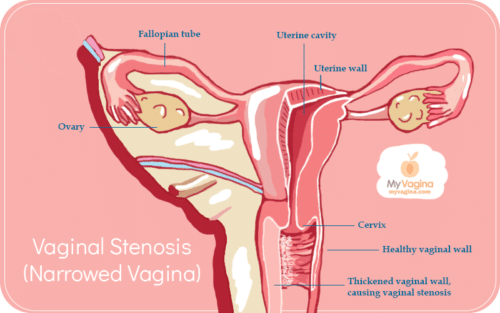BV and ovarian cancer – is there a link?
Can an unhealthy vaginal microbiome contribute to or cause ovarian cancer? Researchers look into it.
In utero exposure to DES
DES is a synthetic oestrogen given to millions of women during the 50s and 60s, before it was found to possibly cause vaginal cancers in female offspring.
Study: Long-term overweight at greater risk of endometrial cancer postmenopause
A study looks at how long women were overweight or obese for, and their risk of certain cancers.
Understanding vulvar syringoma
Syringomas are small white or yellow bumps that appear on the vulva, eyelids, upper cheeks and other areas. The part that affects the vulva is known as vulvar syringoma.
Cystic teratomas and dermoid cysts – ovarian
A dermoid cyst is a growth in the ovary that contains hair, teeth, bone, and other tissue. A dermoid cyst is not a pregnancy, but a tumour.
Benign ovarian masses
Benign ovarian masses can include non-cancerous tumours or cysts, with most coming and going without symptoms. A benign mass could mean a cyst that develops during or after ovulation, or a tumour that appears out of embryonic tissue.
Vaginal dilators and dilation
We discuss the uses of vaginal dilators, including recommendations by experts on how to use dilators. Dilators are used in women whose vaginal canals have shrunk and thickened, or were not large to start with. There are many conditions that benefit from gradual stretching of the vagina.
Radiation-induced vaginal stenosis (narrowing of the vagina)
Narrowing of the vagina (vaginal stenosis) can occur as a result of cancer treatments. A narrow vagina can cause a few issues, in particular sexual issues, since proper penetration can't occur without pain or discomfort. Vaginal stenosis also causes issues with vaginal examinations, period flow, and giving birth.
Ovarian cancer
There are two main types of ovarian cancers, with survival rates variable depending largely on what stage the cancer is discovered at.
Uterine cancers (sarcoma)
A uterine sarcoma is a highly malignant type of cancer that forms in the uterus, making up 5% of uterine cancers.
Squamous cell vulvar cancer
Squamous cell vulvar cancers are becoming less lethal as treatments improve.
Vulvar cancers
Vulvar cancers are reasonably rare for the most part, but usually get diagnosed late, making vulvar cancer more deadly than it ought to be. Vulva cancer may be innocuous in its symptoms, which makes regular pelvic exams more important than ever, especially as we age.
Vulvar or vaginal melanoma
Vulvar and vaginal melanoma is a rare form of gynaecological cancer affecting the melanin-producing cells under our skin, the melanocytes. Melanomas tend to be pigmented spots on the skin that look unusual, but we can easily miss them on our vulva or vagina.
Gestational trophoblastic disease (molar pregnancy)
A molar pregnancy is characterised by a positive pregnancy test, but the growing foetus is actually a tumour. There is actually no foetus present at all, and the pregnancy would never have been viable.
Hyperreactio luteinalis – rare case of enlarged, polycystic ovaries during pregnancy
Hyperreactio luteinalis is a rare, benign ovarian condition often mistaken for ovarian cancer.
Cervical cancer
We take a closer look at cervical cancer, the reasons why it may crop up (HPV), and what we treat cervical cancer with. There are varying degrees of cervical cancer, which are each treated differently, like all cancers.
Navigating sex with an ostomy
Good sex (with an ostomy in your belly) is totally doable! Get some hot tips for keeping it in the bag and under the covers.
AP resection and your vagina
An AP resection is surgery to remove part of your colon and vagina, which then requires reconstructive surgery to make your vagina and bowel (if possible) functional.
The radical cystectomy
This procedure removes the bladder, uterus, ovaries, fallopian tubes, cervix, the front wall of the vagina, and the urethra.
Life after a pelvic exenteration (complete pelvic organ removal)
This procedure is the complete removal of all of your pelvic organs, usually due to extensive disease as a last resort.
- 1
- 2






